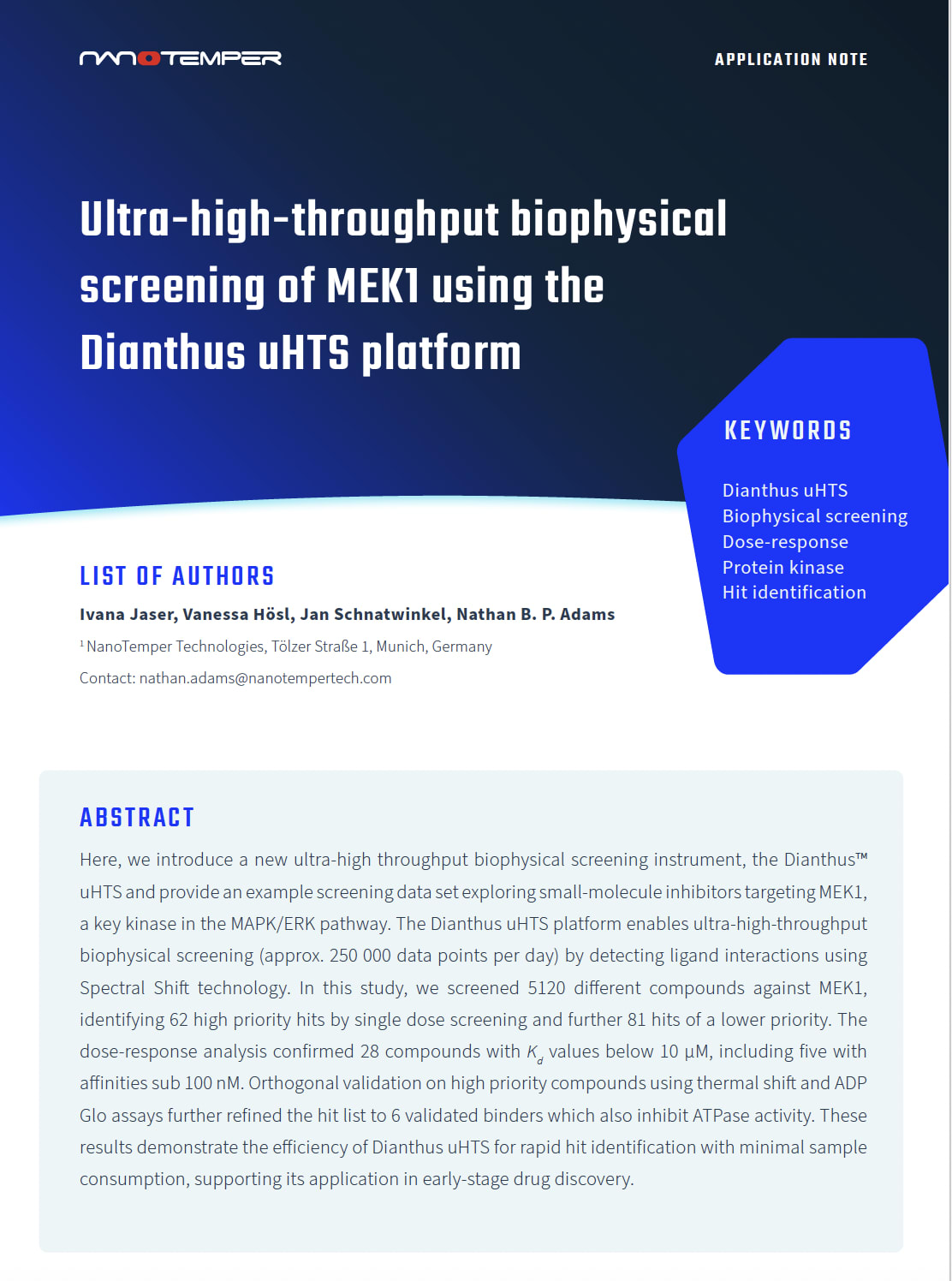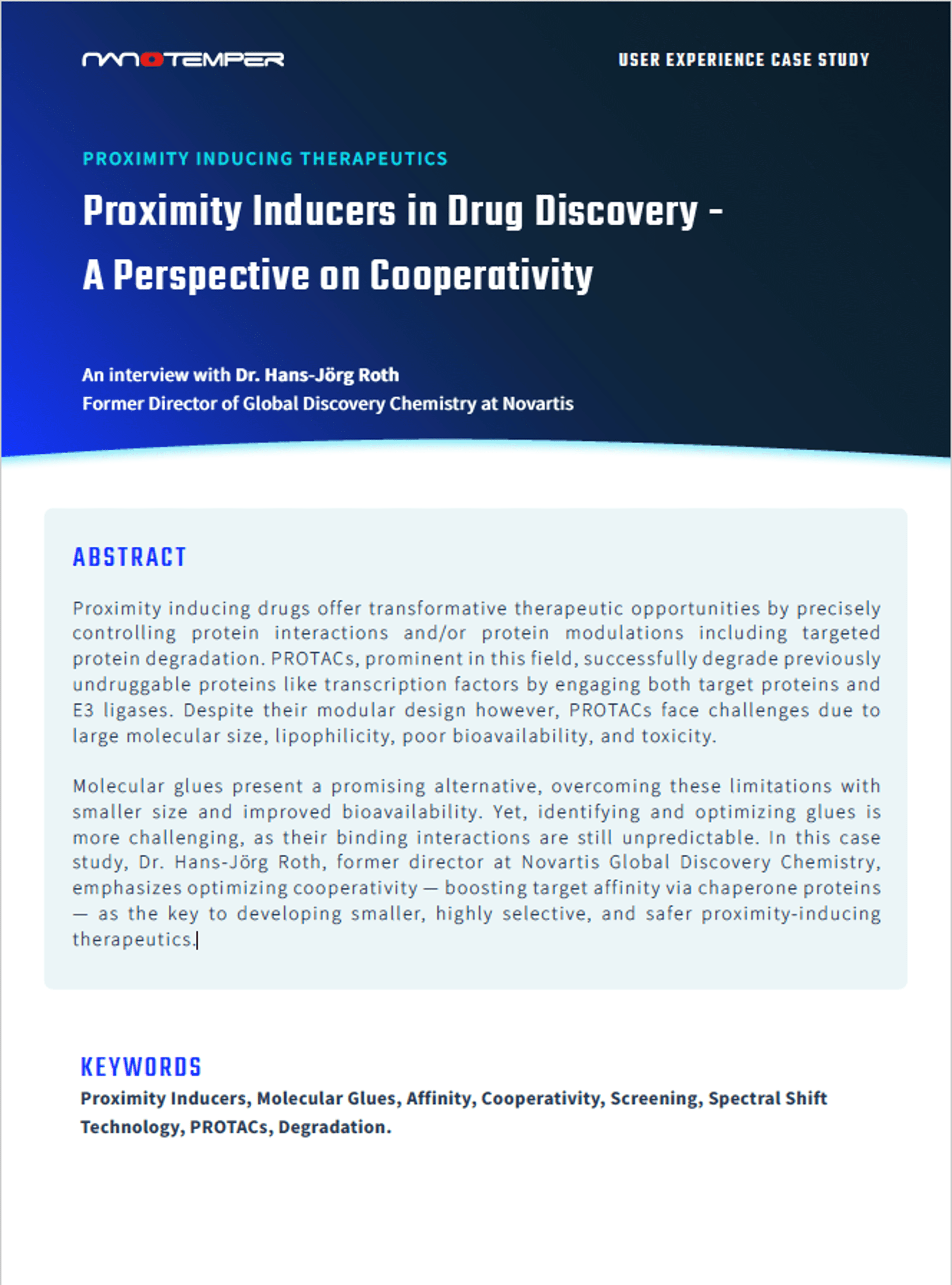MYC is an important therapeutic target that associates with MAX to regulate gene transcription. Its lack of binding pockets and the presence of disordered regions make it a difficult protein to study with biophysical tools that require immobilization during drug discovery and development.
For this case study we used Dianthus with Spectral Shift technology to evaluate the direct binding of three MYC:MAX inhibitors, and their ability to displace DNA. The immobilization-free, in-solution, and fluorescence-based method made it possible to easily study interactions involving a protein with intrinsically disordered regions like MYC.









